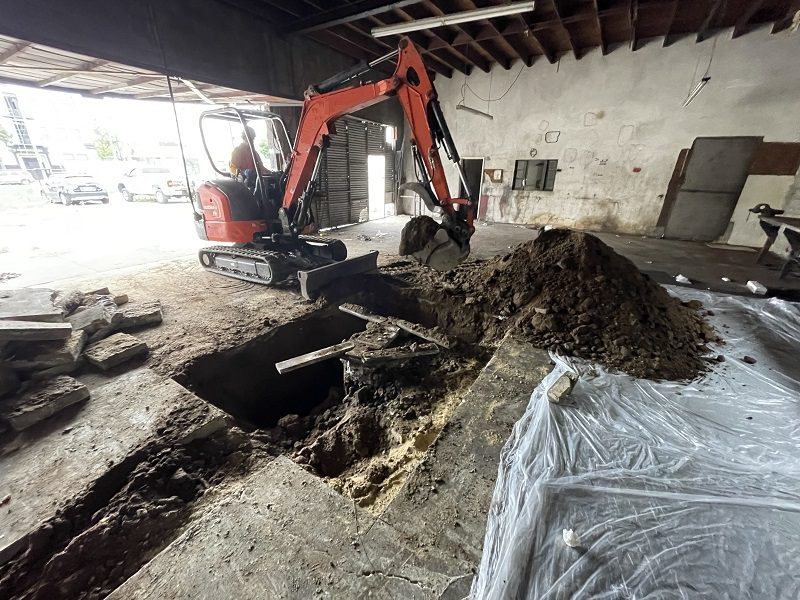Hydraulic Lift Removal Contractor
A hydraulic lift removal contractor specializes in hoist removal projects, entailing excavation, soil contamination cleanup, and strict environmental compliance to prevent further soil and groundwater pollution from occurring. Prior to excavating, various permits and EPA waste profiles must be arranged. During fieldwork, excavation contractors, field geologists, hazardous waste handlers, and other environmental professionals carefully extract each hoist from the subsurface, in accordance with agency guidelines and modern geological standards. Afterward, the geologist collects soil samples and prepares a report to confirm the complete removal of hydraulic fluid contamination and clean backfill compaction. Updated April 18, 2024.

Why are Hydraulic Lifts an Environmental Issue?
Underground lift systems comprise a series of pipelines, manifolds, oil storage tanks, and hoists or pistons containing hydraulic fluid. As these systems operate over time, they become prone to leaks and spills. Similarly, significant releases of hydraulic fluid into the environment can occur with improper removal tactics. As a result, the underlying soil and groundwater aquifers are subject to contamination.
Hydraulic Hoist Chemicals of Concern
Releases of hydraulic fluid into soil and groundwater are a concern with underground lift systems. And the primary chemicals of concern for hydraulic lift removal contractors are polychlorinated biphenyl (PCBs), oil-range total petroleum hydrocarbons (TPH-o), and various volatile organic compounds (VOCs) and semi-volatile organic compounds (SVOCs). The hydraulic lift removal process aims to extract the hoist itself, as well as remediate the contamination of soil.
Hydraulic Fluid Contamination
During a Phase 1 Environmental Site Assessment, an environmental professional determines whether an underground hydraulic lift system is a “recognized environmental condition.” This conclusion depends on the likelihood of a hydraulic fluid leak into the subsurface. For instance, older systems have higher chances of leaks due to corrosion and waring of seals or pipe connections. Depending on these results, the Phase 1 ESA recommendations may entail a Phase 2 Environmental Investigation and hydraulic lift removal.
Learn About the Underground Hydraulic Lift Removal Process
Geo Forward’s “Underground Hydraulic LIft Removal Process” page provides more information about this specialized service.

